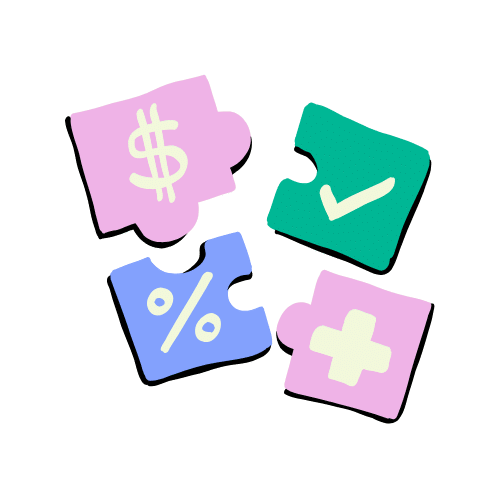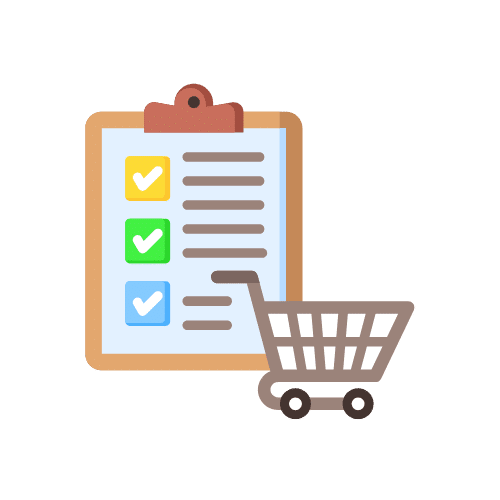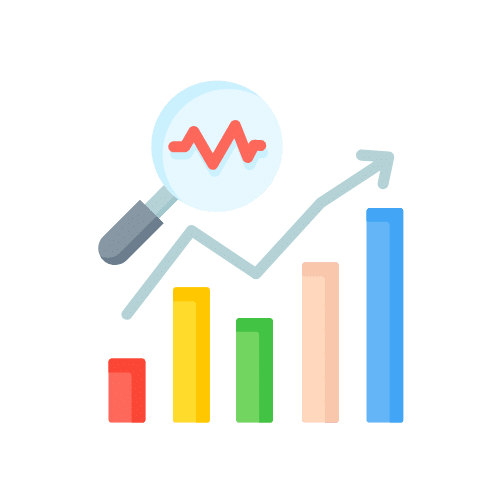SAP S4 Hana: the guide
Discover our guide to the SAP S4 Hana solution.
You are here : Home " SAP Guide " SAP Solutions "SAP S4 Hana
There's a paradox in the SAP universe.
Everyone is talking about SAP S/4HANA.
Migration companies, consultancies, recruiters...
The the subject for years.
But as soon as you ask a simple question - "What exactly is S/4HANA?" -
answers become blurred, technical and often confusing.
It's as if this thing had become too big to understand.
And yet, today, understanding S/4HANA is the best shortcut to entering the SAP world.
Introduction to SAP S/4HANA
If you work in IT or a large company, you've heard this phrase before:
"We're going to migrate to S/4."
Often thrown around in meetings as if everyone knew what was involved.
But in reality, few people really know what's behind this long-winded name.
What is SAP S/4HANA?
SAP S/4HANA is SAP's new ERP.
A system that manages all company processes:
accounting, logistics, purchasing, production, HR, sales...
The difference?
It's cloud-native (or almost), and ultra-fast thanks to its in-memory database,
and above all, it overhauls decades of SAP ECC developments.
A platform designed for the present (user experience, AI, real-time analytics)
and for the future (cloud integration, modular architecture, automation).
Developments since SAP ECC
SAP ECC (or ERP Central Component) was solid.
But also heavy, complex and sometimes rigid.
With S/4HANA, SAP has made a radical choice:
starting almost from scratch.
Result:
- Simplified data structures (no more aggregates, hello CDS views)
- A unified data model
- A modernized interface with SAP Fiori
- A more open and extensible architecture
It's more than an update.
It's a rewrite.
Benefits of switching to S/4HANA
Why do so many companies switch, despite the cost and complexity?
Because the benefits are strategic:
- Performance everything works in real time
- On-board analytics no need for a separate BI tool
- Redesigned user experience : via SAP Fiori
- Easy integration : with SAP BTP, SaaS tools, or legacy
- Safety and compliance up to date
And above all, because SAP has announced the end of ECC support in 2027.
It's now or never.
So S/4HANA isn't just a new piece of software.
It's a paradigm shift.
And to fully understand it, we need to understand how it works.
We start with its technological heart: architecture.
SAP S/4HANA architecture
You may be wondering why S/4HANA is so fast,
or why everyone's talking about this famous "in-memory" database.
That's because S/4HANA's architecture changes the rules of the game.
This is no longer a classic ERP system.
This is a system designed for speed, modularity and real time.
Technique is good.
But in the end, it's what you can do with it that counts.
Key features of SAP S/4HANA
An ERP is first and foremost a promise:
centralize company processes in a single system.
S/4HANA takes this promise to the next level.
Not only does it centralize, it also simplifies, accelerates and makes each business module intelligent.
Here's an overview of the main features.
S/4HANA isn't just technology.
It's an operational gas pedal.
But for the experience to be complete, the user must also find his way around.
User experience with SAP S/4HANA
Let's be honest:
the old SAP interface from the 90s, with its gray screens and transaction codes,
has never shone in terms of ergonomics.
But it was all before SAP Fiori.
With S/4HANA, SAP has understood something fundamental:
if the user doesn't understand what he's doing, he won't use it.
SAP Fiori and UX design
Fiori is more than a visual facelift.
It's a user-centered design philosophy:
- A responsive, mobile-friendly interface
- Streamlined, task-oriented screens
- Dynamic, customizable tiles
No more obscure codes.
You open your Fiori screen and see: "Create a sales order", "Track my payments", "Analyze my inventory".
SAP has adopted the codes of modern apps.
And that changes everything.
User interface customization
With Fiori Launchpad, every user can its dashboard.
You can :
- Add, remove or rearrange tiles
- Modify default filters
- Save your views
- Access intelligent recommendations based on your role
And all this, without involving the IT department.
Maximum autonomy.
Most popular Fiori applications
Do you want a concrete idea of what companies are really deploying?
Here are some popular Fiori apps:
- Manage Purchase Orders supplier order tracking
- Post Incoming Payments Customer receipts
- Create Sales Orders Simplified customer order creation
- Track Production Orders production order tracking
- Monitor Material Coverage visualization of material breaks
And best of all, these apps get richer with every update.
Want an example? Then watch this video:
SAP regularly pushes out improvements without you having to recode everything.
With Fiori, SAP has finally made its ERP usable by everyone.
Not just by power users.
But before you can take full advantage of this experience...
you still need to migrate.
Migration to SAP S/4 HANA
Switching from SAP ECC to S/4HANA is a bit like renovating a house while continuing to live in it.
You can't break everything.
But you can't stay as you are either.
And this is where the choice of migration scenario becomes as important as the technology itself.
Transition scenarios (Brownfield, Greenfield, Selective)
There are three main scenarios to migrate to S/4HANA :
Brownfield
You keep your existing system (SAP ECC) and convert it to S/4HANA.
✔️ Less risky, faster
⚠️ You keep the old customizations, good or bad.
Bluefield
You keep certain data/processes, but rethink the rest.
✔️ Maximum flexibility
⚠️ Higher technical complexity
Greenfield
You're starting from scratch. New system, new data, new process design.
✔️ Ideal for a fresh start
⚠️ Longer, heavier, more expensive project
The right choice depends on your situation, your budget, and your appetite for change.
SAP Readiness Check and assessment tools
Before deciding, you need to know where you are.
SAP offers several tools to help you:
- SAP Readiness Check generates an automatic report from your ECC system.
It identifies: impacted modules, custom code to review, data volumes, non-compatible add-ons... - SAP Transformation Navigator to align your current landscape with target solutions in S/4HANA
- Item Catalog simplification list of all changes made by S/4 (very useful in brownfield)
These tools give you a clear vision.
And help you build a realistic roadmap.
Best practices for a successful migration
Some lessons learned from successful S/4 projects :
- Don't neglect the preparation phase functional inventory, data cleansing, review of customizations
- Train your users beforenot after
- Don't try to migrate everything at once: split up your project.
- Involve the business from the outset: a migration is also a transformation project
And above all, don't wait until 2026 to get started.
The end of ECC support is fast approaching.
And S/4 experts will be rare, and therefore expensive.
Once the migration is complete, a new world opens up:
intelligent integration with the rest of your information system.
Integrating SAP S/4 HANA with other solutions
A modern ERP is not a fortress.
It's an open platform, capable of communicating with its environment.
And that's exactly what SAP S/4HANA enables:
intelligently connect SAP and non-SAP applications, data and processes.
Connection to SAP BTP and SAP Analytics Cloud
You want to enhance S/4HANA without modifying it?
Would you like to create a mobile app or a specific extension?
👉 Passes through SAP BTP (Business Technology Platform).
It's the ideal environment for :
- Expand without touching the ERP core
- Create workflows, apps and dashboards
- Use S/4 data in AI, IoT or automation projects
And on the analytical side, SAP Analytics Cloud connects directly to S/4HANA.
Result: you build reports, simulations or predictive analyses... on real data, in real time.
Integration with third-party tools (CRM, PLM, SCM)
Do you use Salesforce, a specific PLM or an external SCM tool?
No worries.
S/4HANA offers :
- from Standardized APIs (OData, SOAP, REST)
- from IDoc interfaces for traditional flows
- a interoperability with market standards
And thanks to the connectors available in SAP BTP, you can create reliable, automated, scalable exchanges.
Using SAP Integration Suite
To go further, you can use SAP Integration Suite.
It's a cloud hub for orchestrating all your workflows.
With :
- Hundreds of ready-to-use connectors
- Graphic tools for designing flows
- EDI, API management and event management capabilities
You centralize your integration logic.
And you don't have to depend on a thousand custom scripts.
Intelligent integration means smooth processes.
But beware: the more you connect, the more you need to secure.
Security, compliance and governance in S/4HANA
An ERP system contains your company's most sensitive data:
- sales,
- suppliers and customers,
- HR,
- access to inventory, production, payments...
And yet, in many projects, safety is not treated as a priority.
Until something goes wrong.
S/4HANA offers a comprehensive approach to security, integrated right from the start.
But you still need to know how to use it.
Roles and authorizations
The first line of defense is access management.
In S/4HANA, you can :
- Define business roles (e.g. buyer, controller, production operator)
- Check to the field what a user can see or modify
- Use the segregation of duties (SoD) to avoid conflicts of interest (e.g. the same person cannot create an order and validate it)
Everything is managed via SAP GRC, or directly in Fiori for simple requirements.
A good authorization system is invisible.
A bad one is a ticket factory.
Logging and auditing
Do you want to know who did what, and when?
Do you need to reconstruct an action after an incident?
S/4HANA integrates advanced logging functions:
- Audit trails on sensitive objects (customers, orders, suppliers, etc.)
- Access and modification logs
- Abnormal behavior alerts
You can centralize all this in SAP Cloud ALM or third-party tools like Splunk.
Traceability is not a luxury.
This is a regulatory requirement.
Regulatory compliance (SOX, RGPD)
S/4HANA also helps to comply with strict standards:
- SOX segregation of duties, auditability, security of financial data
- RGPD right to be forgotten, consent, minimization of personal data
You can :
- Anonymize or pseudonymize personal data
- Restrict access to sensitive data
- Monitor access and processing
But remember: SAP provides the tools.
It's up to you (or your customer) to configure them.
You've secured your ERP.
Perfect.
But before going any further, we need to talk about an often taboo subject: the price.
SAP S/4HANA costs and licenses 💰
You've secured your ERP, summarized its uses, but the question always comes up:
How much does it cost?
Here's a clear overview, based on recent, reliable sources.
The main licensing models
SAP offers two main models:
– Perpetual license (On-Premise) one-off purchase, large initial investment, then annual maintenance (~20 % of the license price).
– Subscription (Cloud) Monthly or annual invoicing, including hosting, software and support. Depending on your profile, via SAP HANA Enterprise Cloud (HEC), S/4HANA Cloud or RISE with SAP (a transformation bundle including infrastructure and services).
User licenses: the FUE concept
In Cloud models, SAP has replaced the old user profiles with the Full User Equivalent (FUE) concept.
It unifies the evaluation of costs according to level and frequency of use: simpler to manage in a bundle like RISE with SAP.
A professional user can cost around 120 USD/month according to some sources, but volume discounts are frequent.
Indicative price ranges
These are useful estimates to give you an idea, but your own negotiations can strongly influence costs:
– Cloud subscription The cost: often a minimum of 100,000 USD/year for an SME, and up to several million depending on the number of users and services included.
– Perpetual license A professional user can cost ~$4,000 USD one-time, limited users less than $1,000 USD.
– Overall TCO (license, implementation, equipment, associated services): first year between USD 250,000 and USD 500,000 minimum, and up to several million for major projects.
Additional costs
Don't forget :
– Implementation Costs: integrators, training, migration, testing. Often several times the cost of the license itself.
– Infrastructure (for On-Premise) : servers, storage, database licenses, maintenance...
– Indirect digital access Bots, APIs, IoTs generating documents in the system, subject to specific license.
Synthetic comparison
| Model | Payment | Estimated user cost | Benefits | Disadvantages |
|---|---|---|---|---|
| On-Premise (perpetual) | Upfront payment + maintenance | ~ USD 4,000 | Complete mastery, unlimited duration | High investment and maintenance costs |
| Cloud / RISE (opEx) | Monthly / annual subscription | ~ 120 USD/month/user | Updates included, OpEx stable | Less flexible, SAP-dependent |
ℹ️ To know if you can't find everything
SAP does not publish its public rates by service: it depends on your contract, your country, your company size, the number of users, etc.
Tools such as SAP Transformation Navigator, SAP ERP QuickSizer or SAP Readiness Check enable you to estimate the license impact before negotiation.
Resources for learning SAP S/4HANA
Understanding SAP S/4HANA is one thing.
Training to become operational is another.
And the good news is that you don't have to already have a job or be sponsored by a big company to get started.
Here are the most useful resources if you want to upgrade your skills, progress or make a serious career change in the SAP ecosystem.
📚 SAP Help Portal and technical documentation
The SAP Help Portal is the technical basis:
complete guides to all modules, functions and new features.
Not necessarily sexy.
But indispensable when you want to know how it really works.
Tip: start with the "Simplification Item Lists" or "What's New Guides" to avoid getting lost.
🌐 Communities and blogs
You'll never move as fast as when you ask questions.
Here's where to look:
- SAP Community (active forums, tutorials, events)
- LinkedIn follow consultants who regularly post on S/4HANA or Fiori
- YouTube dozens of technical and popular channels on SAP (we also recommend you take a look at ours 👀)
And above all: ask questions, share what you learn, network.
That's how you get good at it.
🎓 Key User Training
If you're reading this guide, you're already in the right place.
Key User Training is the French-speaking reference hub for :
- beginners undergoing retraining,
- junior consultants,
- or anyone who wants to learn SAP in a practical, hands-on setting.
You'll find :
- from step-by-step training focused on practice (not just theory)
- from business use cases on S/4HANA, Fiori, BTP, etc.
- a human supporteven if you're starting from scratch
👉 It's a gateway to employability.
Not just an "online resource".
You're motivated, you have the resources, you understand what's at stake.
So what's left to do?
Make a decision.
SAP S/4HANA is much more than just a new version of ERP.
It's a generational change,
a shift towards greater speed, simplicity and business intelligence.
And above all: an immense opportunity for those who know how to prepare for it.
You've seen it in this guide:
- S/4HANA simplifies data and processes
- Better integration, finer administration
- It opens the door to new uses: real-time analytics, AI, automation, etc.
- It becomes a market standard
The real question isn't, "Am I going to work on S/4HANA?"
The "what level I want to be at when it happens."
Do you just want to follow recipes, or become the one who understands cooking?
Do you want to run specs, or become the consultant we listen to right from the scoping phase?
If you want to be one of the masters of tomorrow's technology,
the time to learn is now.
PS: At Key User Training, we'll help you get through it.







